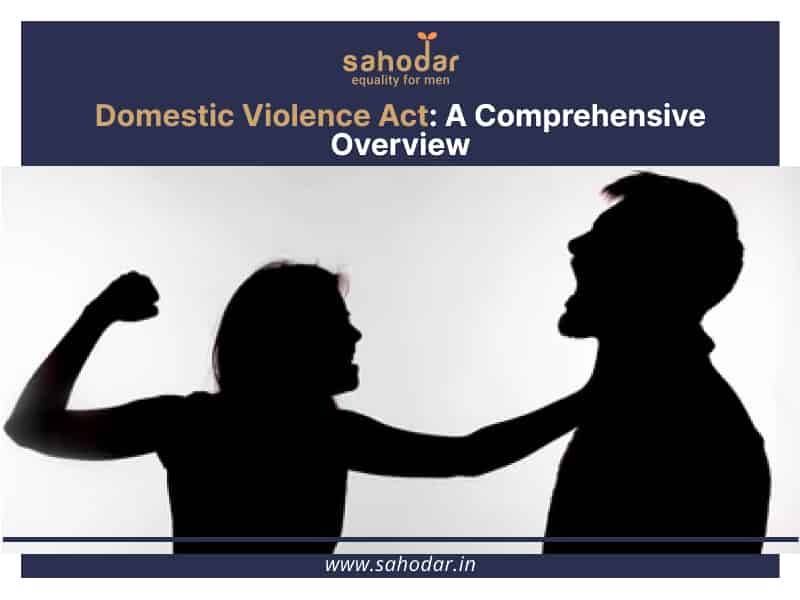The Domestic Violence Act (DV Act), also known as the Protection of Women from Domestic Violence Act of 2005, is a landmark piece of legislation in India designed to safeguard women from domestic violence. This act recognises that domestic violence is a critical issue that extends beyond personal relationships and necessitates legal intervention. Here, we will explore the Act in detail, discussing its background, key provisions, implementation challenges, and recent developments.
Background of the Domestic Violence Act
The Domestic Violence Act, 2005 was enacted in response to the pressing need for a legal framework to protect women from violence within the domestic sphere. Before its introduction, women faced significant barriers in seeking justice and protection against abuse. The Act was influenced by several international commitments, including the Convention on the Elimination of All Forms of Discrimination Against Women (CEDAW), which aims to eliminate all forms of discrimination against women.
Key Provisions of the DV Act 2005
The DV Act is comprehensive, providing various measures to protect women from different forms of domestic violence. Below are the key provisions:
Definition of Domestic Violence
The Act defines domestic violence broadly under Section 3, encompassing physical, emotional, verbal, sexual, and economic abuse. This inclusive definition recognises that domestic violence can manifest in multiple ways, extending beyond mere physical harm.
Rights of Women
The Act grants women several crucial rights:
- Right to Reside in a Shared Household: Women have the right to live in a shared household, regardless of whether they have any legal ownership rights.
- Right to Protection: The Act entitles women to seek protection from domestic violence, ensuring their safety.
- Right to Monetary Relief and Maintenance: Women can seek financial support from the abuser to cover expenses related to living and legal proceedings.
Protection Orders
Section 18 allows women to file for protection orders to prevent the abuser from committing further violence, entering the shared household, or making threats. This provision is vital for providing immediate relief and safety to victims.
Access to Legal Aid
The Act mandates the government to provide legal aid to women seeking protection, ensuring that financial constraints do not hinder their access to justice.
Role of the Protection Officer
The DV Act establishes the role of a Protection Officer, who assists victims in filing complaints, accessing shelters, and ensuring they receive the necessary support services. This officer acts as a vital link between victims and the legal system.
Criminal Offences
While the DV Act primarily focuses on civil remedies, it does recognise that certain acts of domestic violence may also constitute criminal offences under the Indian Penal Code. This dual approach allows victims to pursue criminal charges and civil remedies.
Implementation Challenges
Despite its progressive provisions, the DV Act faces several challenges in implementation:
- Lack of Awareness: Many women remain unaware of their rights under the DV Act, resulting in underreporting of domestic violence cases. Public awareness campaigns are essential to educate women about their rights and the resources available to them.
- Social Stigma: Cultural attitudes and social stigma surrounding domestic violence often prevent women from seeking help. Victims may fear social ostracisation or blame, which deters them from approaching authorities or utilising available resources.
- Judicial Delays: The Indian judicial system often experiences significant delays in processing cases under the DV Act. This can prolong the suffering of victims and discourage them from pursuing justice. Streamlining legal processes is crucial for effective implementation.
- Insufficient Resources: Many states lack adequate resources, trained personnel, and infrastructure to implement the DV Act’s provisions effectively. This results in inadequate support for victims seeking assistance.
- Police Attitude: The attitude of law enforcement can significantly impact the implementation of the Act. Victims often encounter insensitivity or indifference from police officers, which can discourage them from reporting incidents of domestic violence.
Recent Developments
In recent years, there has been a growing recognition of the need for more robust measures to protect victims of domestic violence. Some significant developments include:
- Government Initiatives: Various state governments have initiated programs to create awareness about the DV Act and provide support services to victims. These initiatives often include workshops, helplines, and outreach programs to educate women about their rights.
- Increased Accessibility through Technology: The role of technology in addressing domestic violence has become increasingly important. Many states now offer online resources, helplines, and support services to make it easier for victims to access help without facing the stigma associated with in-person reporting.
- Judicial Interpretations: The judiciary has played a proactive role in interpreting the provisions of the DV Act to ensure justice for victims. Courts have expanded the scope of the Act to include various forms of abuse and have emphasised the need for timely justice for victims.
- Public Awareness Campaigns: Non-governmental organisations (NGOs) and civil society groups have undertaken efforts to raise awareness about domestic violence and the provisions of the DV Act. These campaigns are crucial for encouraging victims to come forward and seek help.
Conclusion
The Domestic Violence Act is a crucial legal framework in India aimed at protecting women from domestic violence. Its success depends on practical implementation, societal change, and collaboration among government, law enforcement, and civil society. As awareness grows and resources improve, there is hope for a future where women can live free from fear and violence. Continued advocacy is essential to ensure the Act serves as a genuine mechanism for empowerment and justice for women.

